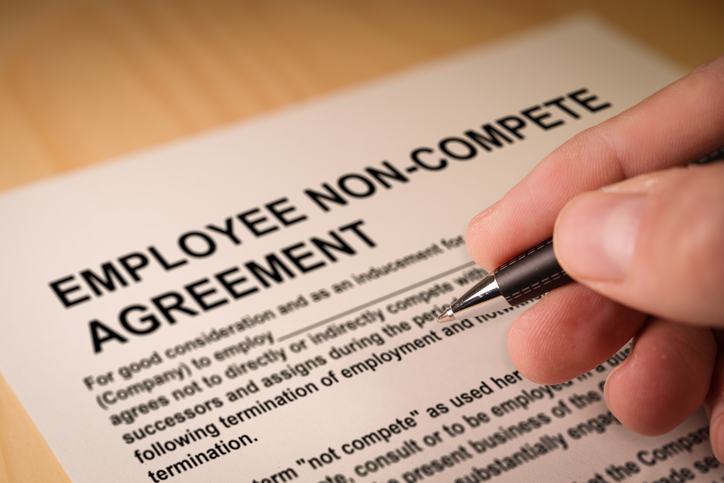Investing in real estate can be a great way to build wealth and secure your financial future. However, what happens when you decide to sell a piece of real estate to invest in a new opportunity? If the property is sold and you deposit the proceeds to your bank account, you will be liable for capital gains tax on your profits from the sale. However, savvy investors can avoid the capital gains tax bill that would otherwise be owed, by utilizing a 1031 exchange. What is a 1031 exchange? A 1031 exchange, which is named after the IRS Code Section where it is found, allows a real estate owner to sell one piece of real estate and buy another, while deferring the tax burden to a later time. This can free up more funds to be invested in the new property immediately. In general, the components for a 1031 exchange are that a piece of real estate to be sold (the “relinquished property”) that is held for use in a trade or business or for an investment, must be exchanged for a like-kind property (the “replacement property”) to be owned by the same taxpayer all conducted in the amount of time as designated by the IRS (these requirements are outlined in more detail below). Though technically considered an exchange, the properties do not have to be actually exchanged for each other in the same transaction (referred to as a “simultaneous exchange”). 1031 exchanges usually involve the sale of the relinquished property followed thereafter at a later date by the purchase of the replacement property. The proceeds received for the sale of the relinquished property must be paid directly to and held by a qualified intermediary, not the taxpayer, who will hold the funds and then use them to purchase the replacement property on behalf of the taxpayer. While 1031 exchanges are a common tool to be utilized by real estate investors, it is important to familiarize yourself with the basic aspects of a 1031 exchange to ensure that you are in compliance with IRS rules. Failure to properly comply with just one aspect of the process could result in the required realization of the entire capital gains amount that was intended to be deferred. 1031 Requirements Investment Property Only real estate held for use in a trade or business or for investment purposes qualifies for a 1031 exchange. This applies to both the relinquished property and the replacement property. This excludes personal residences, and properties held for other personal use, though there are limited exceptions that would allow a former personal home or vacation home to be considered properties held for use in a trade or business or for investment purposes. This also excludes property that is held primarily for sale as a regular part of your business (i.e., property held by a real estate developer that is holding lots for sale to the public). Same Taxpayer An important aspect of a 1031 exchange to remember is that the relinquished property and the replacement property must be owned by the same taxpayer as designated by either a social security number or an employer identification number. This is different from titled ownership. An individual can also be the same taxpayer for 1031 purposes as their single member LLC that is disregarded for tax purposes, among other examples, even though they are legally distinct. Like-Kind Property When it comes to what kind of real estate qualifies for a 1031 exchange, the IRS rules are very broad on their definition. It would be almost impossible to find a nearly identical investment property to replace the relinquished property. With that in mind, the IRS allows almost any exchange of real property to qualify, as long as it is held for use in a trade or business or for investment purposes. This could be rental houses, a commercial building, or even vacant land. Generally, the property that is being acquired through the sale should be of the same or greater value than the property that is being exchanged. If it is not, that does not mean that the transaction no longer qualifies as a 1031 exchange. However, it does mean that the excess proceeds, known as “boot” (think cash, or other non-like-kind property), will be taxable and won’t qualify for deferral. To avoid this, an investor should be sure to identify a replacement property for exchange that is of equal or greater value than the relinquished property. Funds Held by a Qualified Intermediary In order to ensure that the sale of the relinquished property qualifies for a 1031 exchange, the proceeds received must be held by a qualified intermediary. A qualified intermediary must be a third party who is independent of the taxpayer. Any person who has previously served as an agent of the taxpayer (as an employee, attorney, accountant, etc.) within two (2) years of the transaction is disqualified. Upon the closing of the sale of the relinquished property, the proceeds will be paid directly to the qualified intermediary. The qualified intermediary will then hold the funds until the closing of the replacement property, at which point they will release the funds to pay for the replacement property. At no point during the exchange may the taxpayer take possession of the proceeds. It is also important to note, that in the event a taxpayer decides to no longer pursue a 1031 exchange, any funds held by the qualified intermediary are simply transferred to the taxpayer. Timeline There are two important deadlines to be aware of with a 1031 exchange. First is the 45-day rule. Within 45 days of the sale of the relinquished property, the taxpayer must identify the replacement property and designate it to your qualified intermediary who is holding the proceeds of the sale of the relinquished property. The second important date is the 180-day rule. This rule provides that the closing for the replacement property must be conducted within 180 days of the sale of the relinquished property. It’s important to note that these deadlines run concurrently from the date of the sale of the relinquished property, which means you will need to keep a close eye on both deadlines as you move through the transaction. Typical Steps of a Standard 1031 Exchange In a standard 1031 exchange, the general steps are as follows: Conclusion 1031 exchanges can be great ways to reinvest proceeds of a real estate sale in like-kind property to lower your current tax obligations and defer to later years. However, they can be difficult to manage on your own. If you have questions about a potential 1031 exchange and would like guidance, please contact your FGKS Law attorney today.1031 Exchanges




